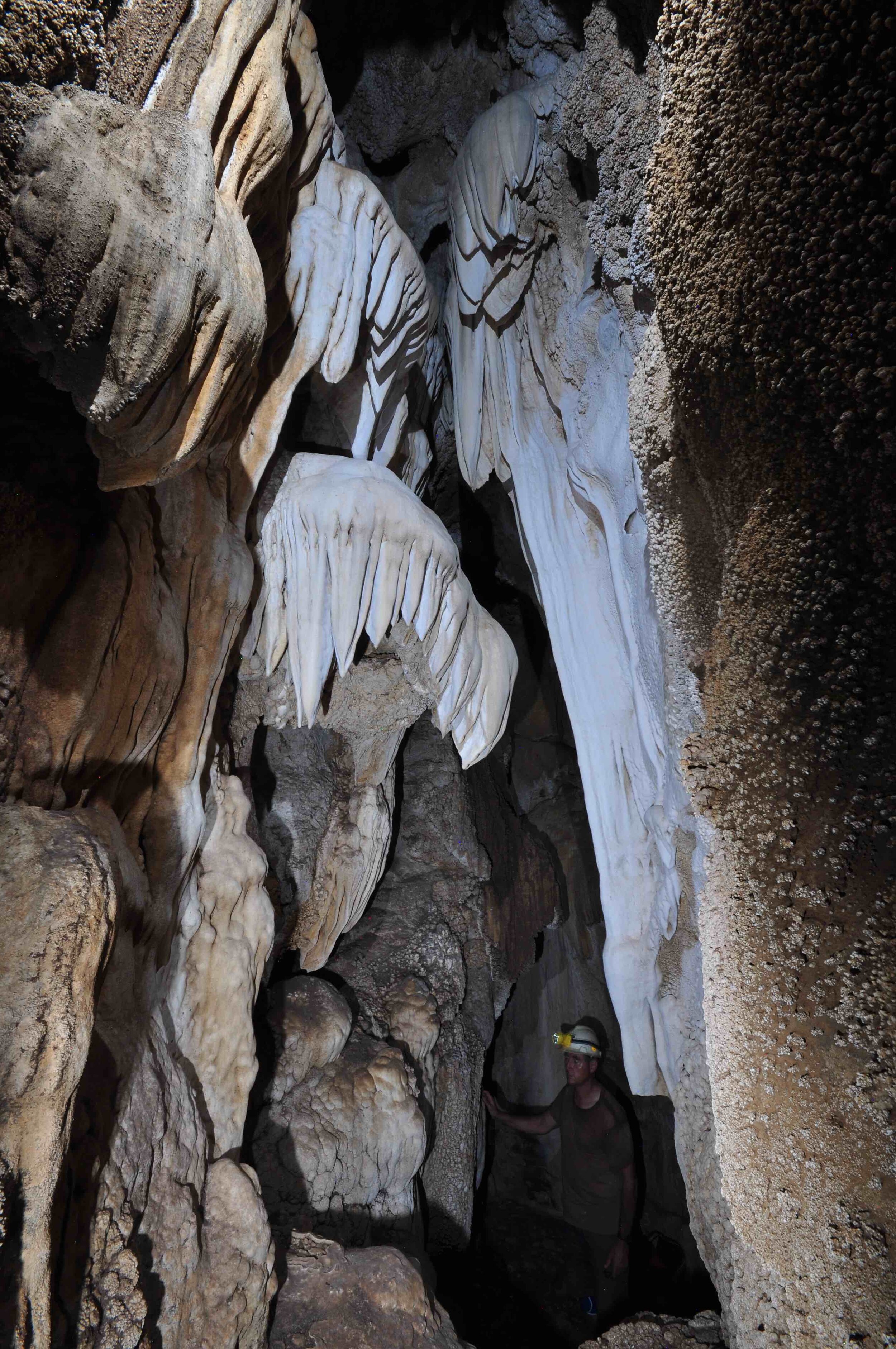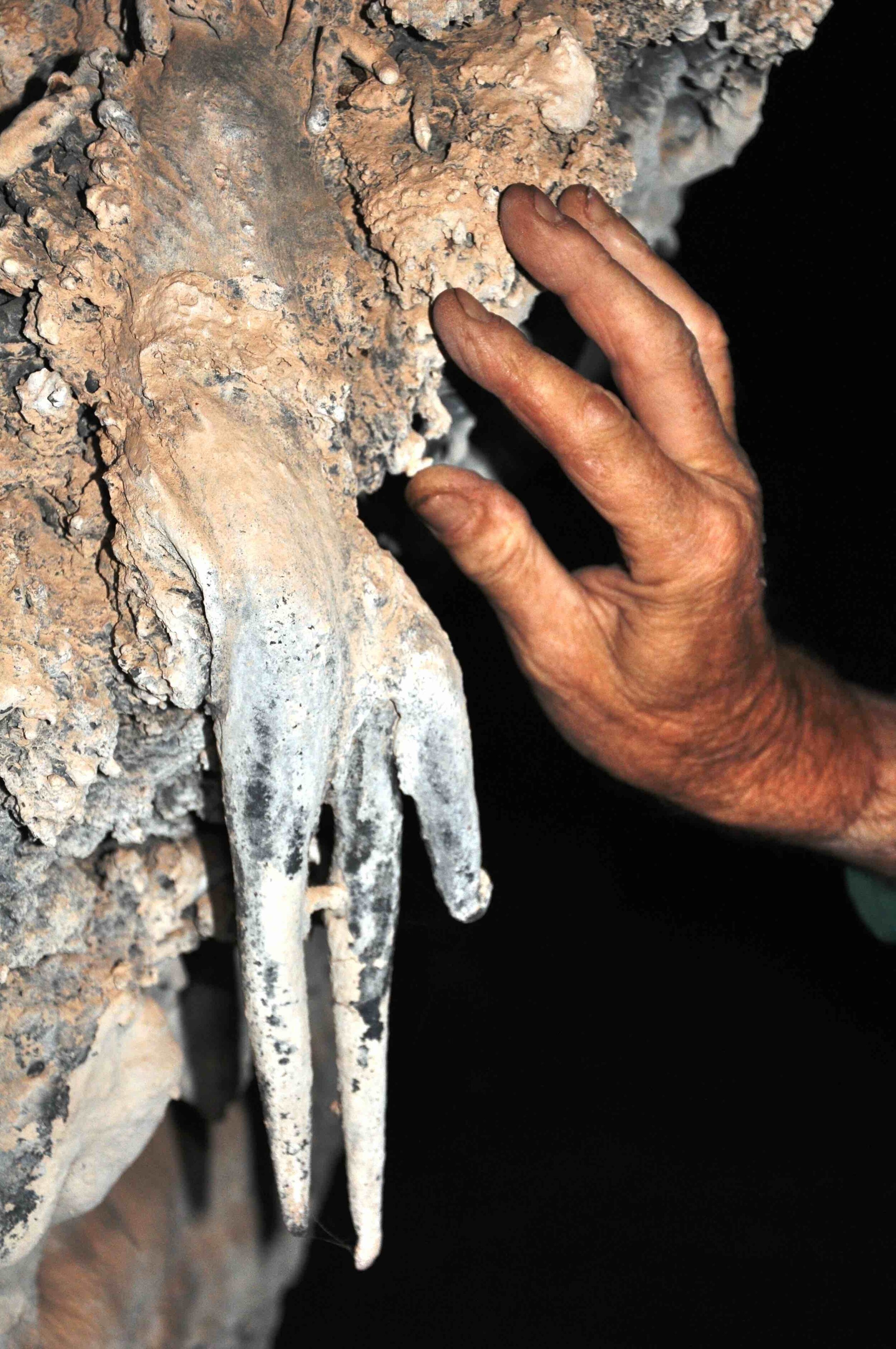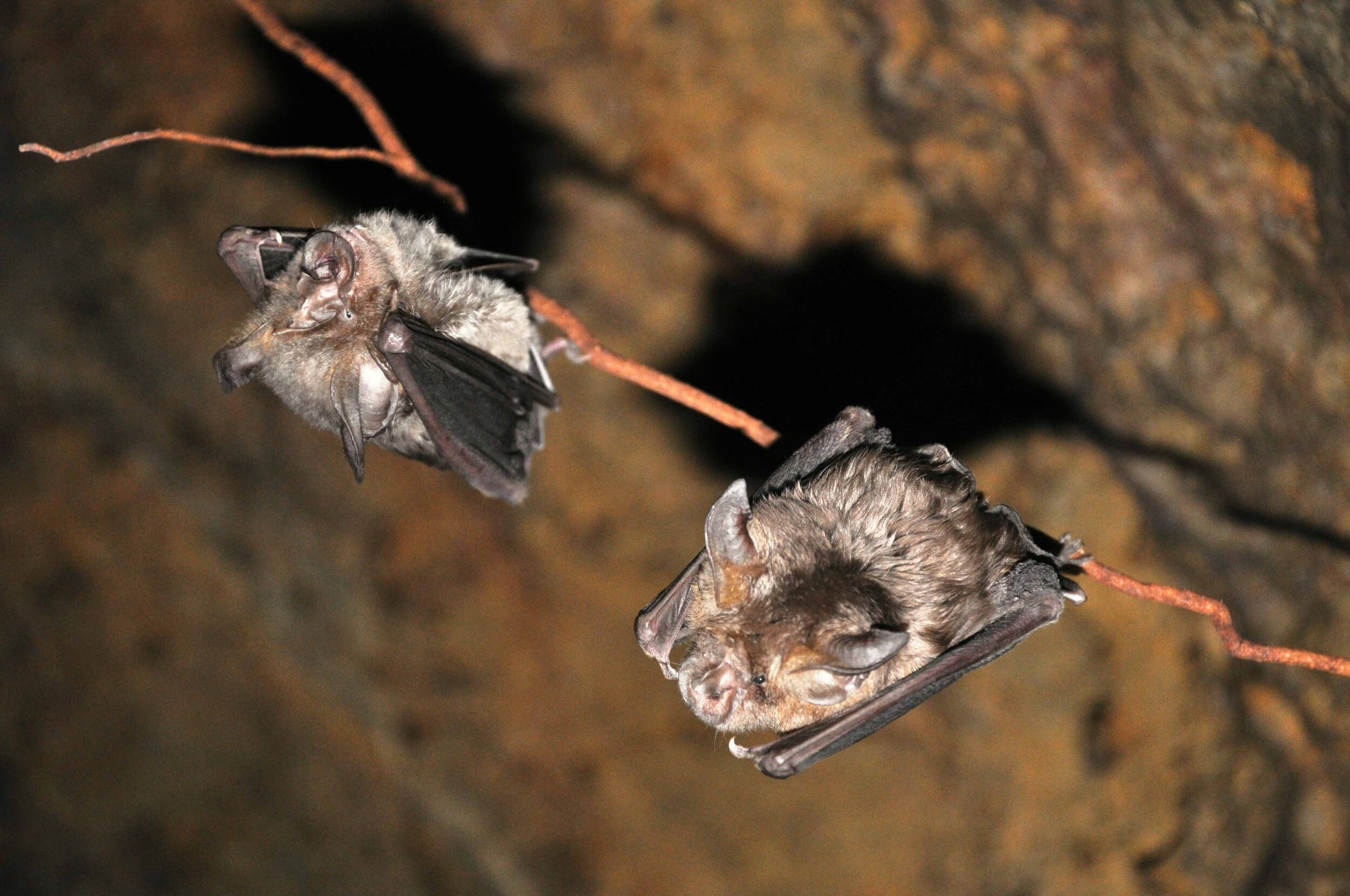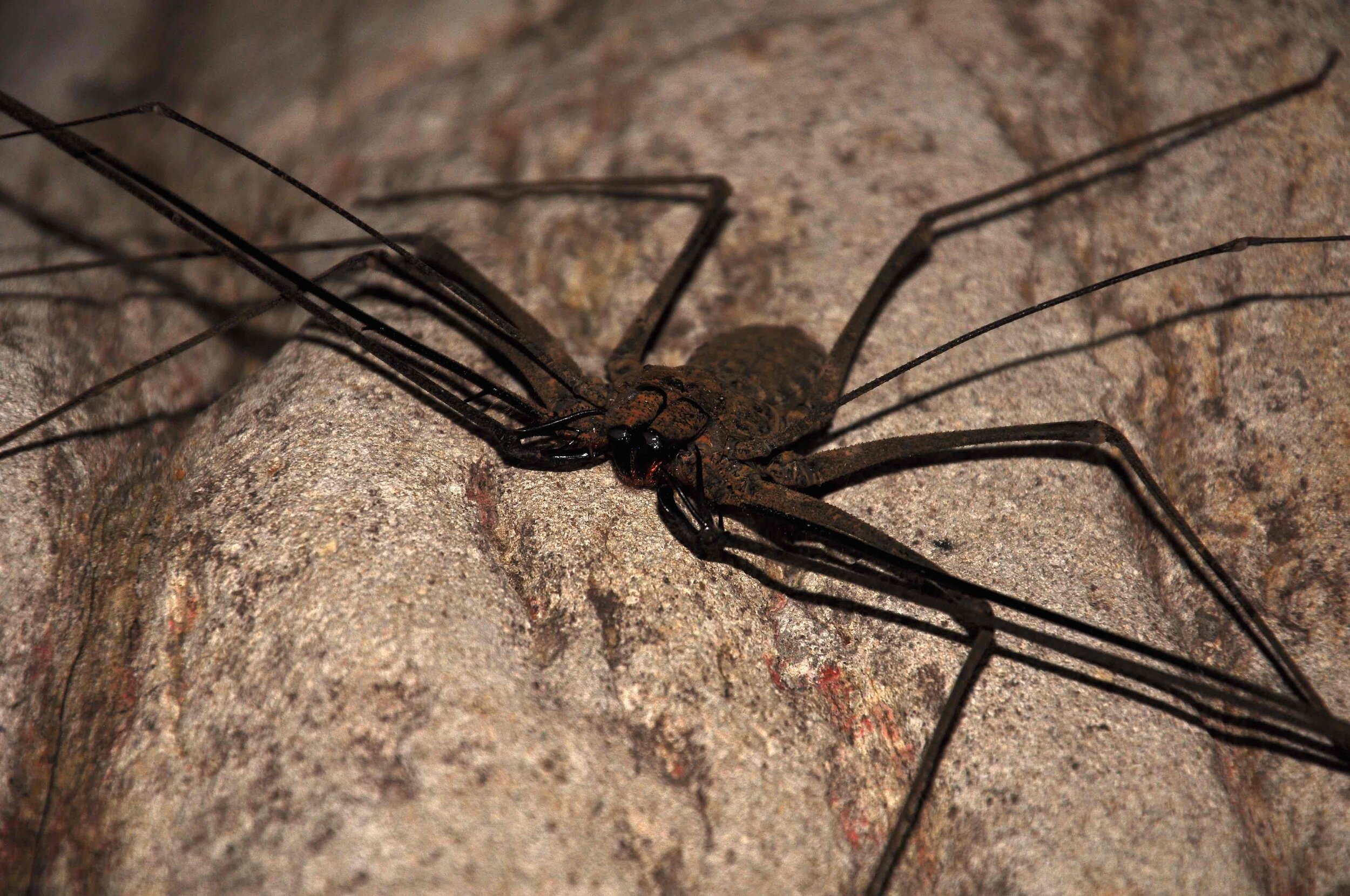Kenyan caving
Caving enthusiast, Clive Ward, explores some of Kenya’s incredible cave systems.
‘I’m stuck.’ Peter’s muffled voice came from the low lava tube. Dan stood by me in the top main end chamber of Leviathan Lava Tube — the longest tube in the Chyulu Hills — waiting for Peter to join us. I went down on my stomach to look back down the small tube entrance. ‘I’m stuck’, his voice now an octave higher. I could see the top of his white helmet and the headlight on it moving around. ‘No you are not Peter’, I said, beginning to push and slide towards him, ‘it’s some loose earth and rock that’s rolled under you’. ‘Don’t struggle, push with your legs.’ Dan and I had managed the crawl and the tight squeeze only minutes before.
I remembered a situation in a limestone cave some years before, when I got hooked up on a narrow awkward bend. My extended right shoulder seemed frozen when a ligament gave me an electric shock. It didn’t help trying to push my rucksack with all my photographic gear in front of me. I tried reversing, but my overalls snagged around the waist and I began to twist left and right. There came a prickling feeling. I’m stuck. For a moment, I seemed to feel my body swell, or that the tunnel began to squeeze me. My breathing and pulse increased. No, stop this. I’ve been caving for thirty years. This is psychological, this is common, relax, go limp. Breathe in slow, control. I rolled my shoulders, lifting my body on my forearms, dug my toes in and pushed using my legs. With a worm action, I freed the waist snag and slid forward through the squeeze.
Leviathan Lava Tube in the Chyulu Hills. Photo by Clive Ward
‘I can’t do this’, Peter’s voice came in pants, his head to one side. We lay head to head, talking for a while and his voice returned to a calm level. ‘Peter, let yourself relax, just go limp. Your head is through, and your body will follow.’
Peter was an experienced caver, and although he had put on some weight over the years, he could control this present situation. His shoulders would fit through and from there I could pull him, if he used his legs to push. Within a few minutes, the three of us stood up in the top main chamber and bantered about past squeezes, in more ways than one.
The top end of Leviathan Tube is filled with invading black ash. The cave lava source cone stood over one kilometre away on the surface and we had hopes of a tube continuation, not just an ash-filled trench. We had tried on a previous occasion to dig a tunnel along the tube wall floor and placed in props with small planks of wood. The invading ash went on and on and we continued to dig. We took a five-minute break, and there came a rumble with a slushing sound. Our dug tunnel collapsed and opened up a higher level — a cavity within the ash. It exposed a wall at the far end and we hoped it to be a dip in the tube roof. We slid over the ash and began to dig down under the roof dip. A standing roof of ash hung above us. Pieces of black wet ash began to fall, so we called it a day and no more digging. Leviathan Tube will extend, we think, but we left it for another day.
Left to right: The Great Hall, Pangani Cave, Coast Limestone; ‘The Alien Hand’, Hells Teeth Cave, Chyulu Hills. Photos by Clive Ward
Extending cave systems is very much part of cave exploration. Often a cave is well-known, but there are some hidden secrets, which usually go beyond the easy access. In Pangani Main Limestone Cave, thirty kilometres from the Kenyan coast, the cave end appeared to be an abseil into a pit with a high roof. Clive King from the Cave Exploration Group coast section and I had a crude sketch map and side profile, and nothing fitted. Pangani Main seemed shorter then on the map drawn over thirty years ago. The caving club member who drew it is no longer in Kenya. His report states that he traversed through, entering many chambers, scrambling and rock climbing to an earth slope and a small exit at the top, where mango trees grew. He ran down, took a ripe mango, to the utter astonishment of a local farmer, and ran back into the cave.
Could it be the El Nino flood of 1998 which changed things, washing away internal infill to lower unseen levels? There seemed to be no other logical explanation. On the abseil into the pit we could not see any extension, and from the pit bottom there appeared to be an arch high up in an over-hanging wall. Tantalising mute sounds of bats screeches came from somewhere, although most sections of caves have bats, and sound directions are misleading. Pangani Main cave went on the back burner for a while.
On another caving excursion in the Pangani area with Clive King, we found a huge cave full of fruit bats. Their eyes reflected hundreds of white orbs and the screeches were deafening. To descend, we had two ten metre abseils to the floor of the main chamber. For much of the descent, we waded in ankle-deep bat guano. Scallop buttresses swept up twenty three metres high, where small shady green skylights pierced the darkness. The cave went on through an arch, into two round-roofed chambers with insect-eating bats. The last chamber, which appeared to be the end, had an intact two metre spray of reef coral embedded in the Jurassic limestone. We speculated that when alive, in a warm shallow sea, it could have been multi-coloured. To one side, we looked down into an oval soak-way pit, where we could see part of the earth bottom. We named the new cave Dracula’s Lair, and had a feeling that this system must be close to Pangani Main cave. Even with GPS at entrances and laser metering, there is still a certain amount of guesswork.
Left to right: Insect-eating bats in the Chyulu Hills; Damon diadema, Coast Limestone Cave. Photos by Clive Ward
The underground is pitch black, and with headlights and flashlights the shadows dance and give a distortion to shapes. Never trust a perceived way — the compass will give the opposite direction and photographs look different than memory by handheld flashlights. The same photograph can never be taken, as it’s always the only one of its kind. The underground world is full of illusions — our senses are altered, and we must learn to interpret misconceptions.
We decided to have another look in the pit at the end of Pangani Main. This time we had a light steel ladder divided in two parts. On a pure hunch, we wanted to climb up the over-hanging wall and look at the vague arch. From the top of our wobbling ladder, it became obvious that a low tunnel continued. In the chamber beyond, we found a graphic two metre spray of fossilised coral reef embedded in the limestone. There came a revelation, and jumbled visions fell into place. We had connected with Dracula’s Lair.





